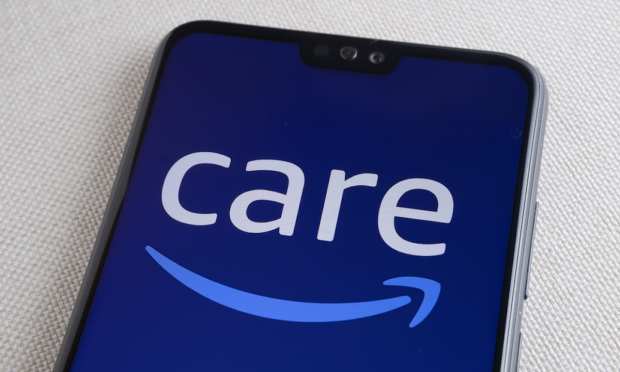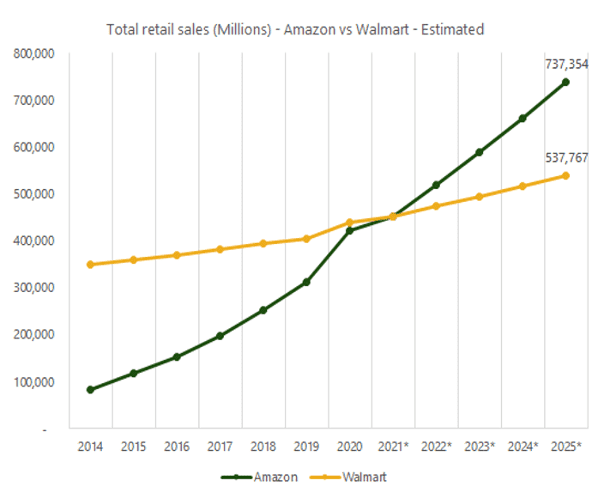Walmart Acquires MeMD; Amazon Care Expands As Race For Consumer Healthcare Spend Intensifies

Walmart has announced its latest big play in the race to shape the future of U.S. healthcare, with the acquisition of telehealth provider MeMD as part of its plan to expand telehealth services to patients nationwide.
The deal is the latest in a series of moves by the retail giant to widen its footprint in the healthcare space. In 2019, Walmart started opening a handful of in-store clinics, offering a full range of primary care services by doctors and dentists for a flat fee, including $25 dental X-rays and $40 office visits. That effort saw a major expansion last fall when, in partnership with healthcare startup Clover, Walmart began expanding access for Atlanta-area seniors with privately managed Medicare Advantage Plans to Walmart Health centers.
Walmart’s trajectory in healthcare seems predicated upon appealing to consumers looking for a lower-priced, more transparent alternative, leveraging its approximately 4,700 retail locations as a base of operations. There are currently 20 clinics in stores with more planned for later this year, according to Wall Street Journal reports.
Walmart previously established a partnership with Doctor On Demand Inc., allowing it to offer telehealth services to its approximately 1.3 million American workers. But with the acquisition of MeMD, Walmart enters the realm of 24-hour, seven-day-a-week service offerings. According to the news release, the deal works toward Walmart’s goal of offering “integrated, omnichannel health delivery that leverages data and technology to improve engagement, health equity and outcomes.”
“Telehealth offers a great opportunity to expand access and reach consumers where they are, and complements our brick-and-mortar Walmart Health locations. Today, people expect omnichannel access to care, and adding telehealth to our Walmart Health care strategies allows us to provide in-person and digital care across our multiple assets and solutions,” said Dr. Cheryl Pegus, executive vice president, health and wellness, in the release. “Our health and wellness mission is to focus on the consumer’s seamless experience and improved health. We are excited to welcome MeMD employees to the Walmart family, and we are looking forward to … accelerating healthcare access across the country.”
But along with Walmart’s latest move into the healthcare field comes news of its biggest rival’s own expansion in the vertical. Earlier this month, Amazon’s virtual primary care business, Amazon Care, announced that it has landed its first employer customer, Precor.
The Precor news follows Amazon’s announcement earlier this year of plans to expand Amazon Care to employees in all 50 states starting this summer, and to make the service available to other employers. It seems Precor is the first of these other employers to sign on with the service. The fitness equipment manufacturer will be charged based on how many of its 800 employees actually use its services each month. Amazon Care’s pay-per-user model is considered an attractive option for larger employers, which have been paying high fixed costs based on the size of their employee base.
The two big players have spent much of the last two years leveling up their healthcare offerings, prepping for the inevitable clash.
The Bigger Competitive Landscape
And it’s a clash where Amazon is notably coming out ahead. Recent research by PYMNTS shows that the long, steady revenue uptrend Amazon has posted over the past decade is set to continue and accelerate — not only breaking the current 9 percent domestic market share tie by the middle of next year, but also opening up a 40 percent lead in U.S. retail sales over the coming five years.
According to PYMNTS’ analysis and projection of total U.S. retail sales, Amazon is on track to outgrow Walmart by more than a three-to-one margin through 2025 by adding $315 billion in additional sales, or roughly 75 percent more than present levels.*
At the same time, Walmart is pegged to add $100 billion in additional revenue over the next five years, or roughly 23 percent more than where it is now, based on PYMNTS’ data.
When viewed on an average annual percentage basis, the forward-looking forecasts break down to Walmart’s sales growing by about 4.6 percent a year, or by about $20 billion, versus Amazon’s $63 billion in new revenue for each of the next five years, or about 15 percent annual sales growth.
Healthcare, however, is an area where Walmart hopes to gain some ground, leveraging the power of its massive store network and its proximity to consumers (90 percent of America reportedly lives within a 10-minutes drive of a Walmart) — particularly when offering telehealth services and a large-scale pharma business could prove to be a very powerful competitive advantage.
But the field itself is undeniably complicated and crowded. Amazon and Walmart aren’t the only big-name players stepping into the healthcare arena looking to take on the problem.
As WSJ reported, the space has seen a lot of M&A action, as firms like Doctor On Demand, MDLIVE and PlushCare have combined or been bought up as the race intensifies. Walgreens Boots Alliance Inc. and CVS Health Corp. are also increasingly entering the competition to use their physical footprints to develop treatment centers for patients with costly conditions. Both have expanded their telehealth offerings during the pandemic, and last year Walgreens said it would attach doctors’ offices to hundreds of drugstores.
The race is big and getting bigger by the day — and we can expect that acquisition and expansion season is far from over.
As the green line in the chart below shows, when these sales figures are translated to a share of U.S. retail sales, Amazon’s stake has gone from a lagging 2 percent in 2014 to a dominant 14 percent slice in 2025.

Source: PYMNTS Data
The yellow line shows that Walmart’s annual low single-digit sales growth during that same 10+-year period of time has allowed it to maintain its market share of U.S. retail sales, but it has hovered relatively consistently between 9 and 10 percent, where it is forecasted to remain.
